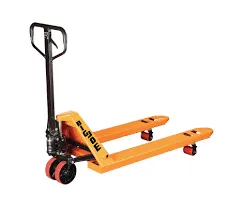


Understanding Fall Arrest Systems Essential for Workplace Safety
In various industries, particularly construction, maintenance, and facility management, safety is a paramount concern. One of the most significant hazards workers face is the risk of falling from heights. To mitigate these risks, fall arrest systems have been developed and are now a fundamental aspect of workplace safety protocols.
Fall arrest systems are designed to safely stop a person from falling and to minimize injury in the event of a fall. These systems include a variety of components, such as harnesses, lanyards, anchors, and deceleration devices. Properly implemented, they can protect workers engaged in tasks at elevation, whether on ladders, scaffolds, roofs, or during aerial work.
One of the crucial elements of a fall arrest system is the full-body harness. Unlike traditional belts, which can cause serious injury upon sudden stops, a full-body harness distributes the forces of a fall across the body, significantly reducing the risk of injury. When worn properly, it allows free movement while keeping the user secure and prepared for any sudden incidents.
Another key component is the connecting device, typically a lanyard, which connects the harness to a secure anchor point. Lanyards come with various features, including shock absorbers that help to reduce the impact of a fall. When a worker falls, the shock absorber deploys and extends the length of the lanyard, gradually slowing the fall and reducing the force exerted on the body.

The anchor point is the third critical component that ensures the integrity of a fall arrest system
. Anchors can be fixed to structural elements or specifically designed fall arrest anchors. It's vital that the anchor is capable of supporting the fall forces, making regular inspections and maintenance critical to ensure safety standards are met.Beyond equipment, effective training and adherence to safety protocols are just as essential. Workers should be thoroughly trained on how to properly use fall arrest systems, including how to inspect their gear before use. Regular safety drills and refreshers can enhance workers' awareness of fall hazards and best practices for fall arrest.
Employers have a legal and moral obligation to provide a safe working environment. This includes not only supplying the necessary fall arrest systems but also fostering a safety culture that encourages workers to speak up about potential hazards. The importance of routine inspections, both of the equipment and the work area itself, cannot be overstated. The Occupational Safety and Health Administration (OSHA) in the United States and other regulatory bodies worldwide set forth guidelines and standards to ensure that fall protection systems are implemented correctly.
In conclusion, fall arrest systems play a critical role in safeguarding workers exposed to fall hazards. By combining quality equipment, proper training, and a proactive safety culture, organizations can significantly reduce the risk of falls and ensure that their workforce remains safe. As industries continue to evolve and work at heights becomes more common, a steadfast commitment to fall safety practices will be essential in preventing accidents and saving lives. Adopting a comprehensive approach to fall arrest systems not only fulfills legal requirements but also demonstrates an organization's commitment to the health and well-being of its employees.



